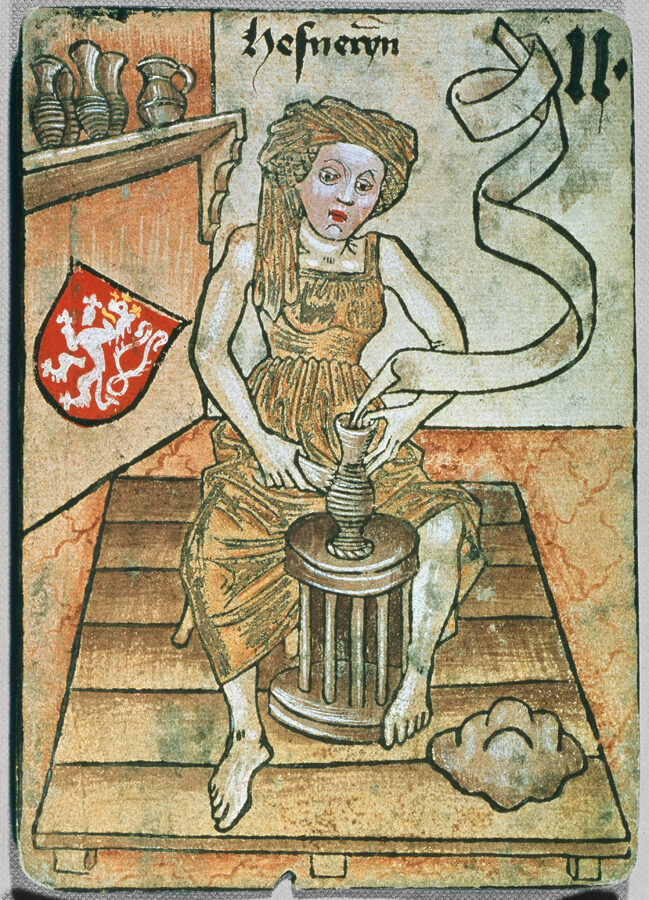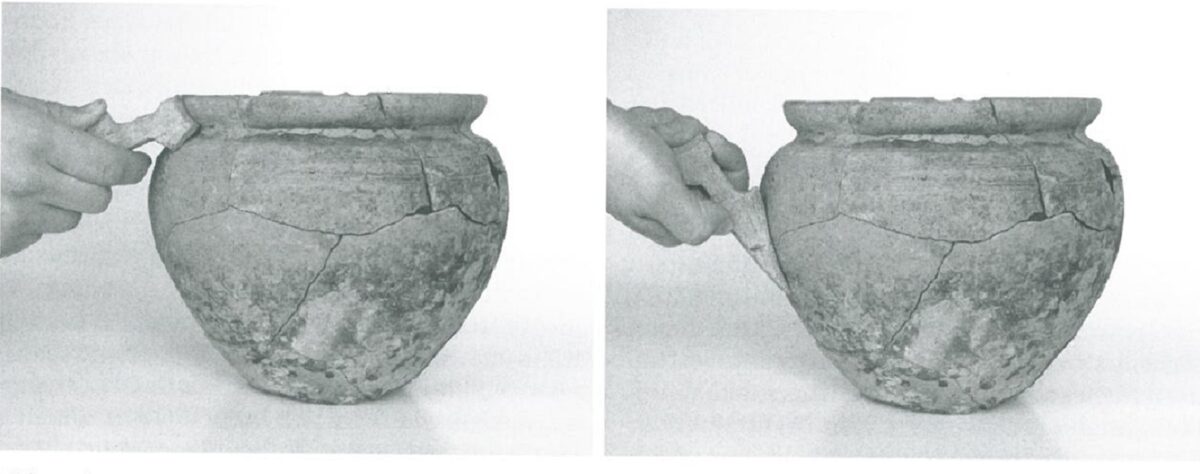Not about bone china yet
...But in medieval Europe ceramics often met bone in the shape of potter's combs and similar tools for shaping and decorating clay vessels.
 Potter at work. Note the potter's comb in her right arm. Depiction on the mid- 15th century German playing card.
Potter at work. Note the potter's comb in her right arm. Depiction on the mid- 15th century German playing card.
By the contemporary depictions alone it is not
possible to distinguish the material such potter's tools are made of;
also wood could have been used as well.
Archaeology provides us with examples of potter's tools made of animal skeletal materials. Here we present you two of the most famous of these - one from Inwroclaw (Poland) and the other from Viljandi (Estonia) .
The Inwroclaw potter's comb [1] is of simple design that very much resemble the one depicted above. The function of it thus can be clearly understood.
The Viljandi find [2] asks for further explications. If it wasn't found in a context of a pottery kiln then certainly this object would have joined ranks of finds with unidentified/unclear function. But look, how nicely it snuggles against the curved surfaces of pots found at the same digs:

 Images from ''Handwerk in den Kleinstädten Estlands im
13. bis 17. Jahrhundert im Spiegel der Archäologischen Ausgrabungen
'' and ''Pihkva Pottepad Viljandis ja Tartus 13. Sajandil''.
Images from ''Handwerk in den Kleinstädten Estlands im
13. bis 17. Jahrhundert im Spiegel der Archäologischen Ausgrabungen
'' and ''Pihkva Pottepad Viljandis ja Tartus 13. Sajandil''.
Below are image of our replicas of these two finds. See more here.
[1] - Pawłowska K. The remains of a late medieval workshop in Inowroclaw (Kuyavia, Poland): horncores, antlers and bones //Written in Bones. Studies on technological and social contexts of past faunal skeletal remains.
[2] - Pärn A., Rossow E. Handwerk in den Kleinstädten Estlands im 13. bis 17. Jahrhundert im Spiegel der Archäologischen Ausgrabungen // Lübecker Kolloquium zur Stadtarchäologie im Hanseraum V: Das Handwerk.
Tvauri A. Pihkva Pottepad Viljandis ja Tartus 13. Sajandil //Eesti Arheoloogia Ajakiri, 2000. (4)
Russow E., Haak A. An outline of pottery production and consumption in medieval and early modern Estonia // 2nd MEETING OF BALTIC AND NORTH ATLANTIC POTTERY RESEARCH GROUP Tallinn, 12th and 13th April 2018 Programme – Abstracts – Outlines